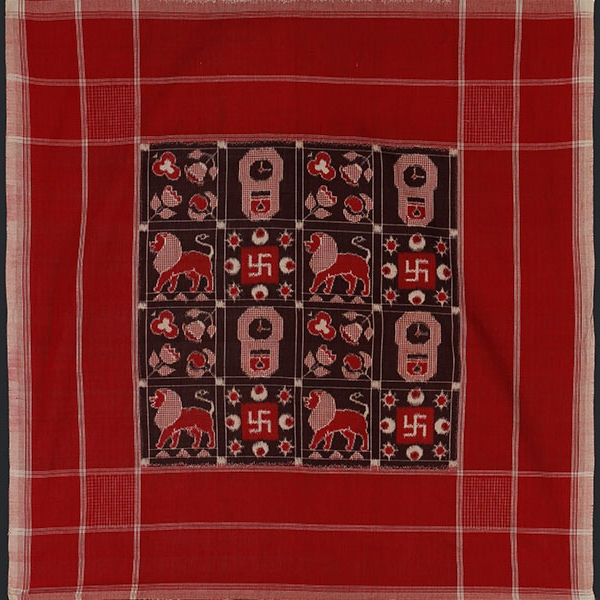
Map Loading...
Telia rumal
ANDHRA PRADESH | telangana | telangana
The Telia Rumal, known by many names such as chowkas, pocket square, and Asia rumal, points to the cloth with motifs formed by an exacting process of tying, and dyeing the yarn prior to weaving. The word Telia is a derivative of tel (oil) that is often used in softening the yarn in preparation for dyeing, while rumal literally translates to a handkerchief. Jella is among a handful of people who continue to weave the Telia Rumal fabric. “Making the unmistakable red, white and dark fabric can take close to a month. Making the design is a tedious process.''
The Telia Rumal is a two fold Ikat weave. The word Ikat is derived from the Malay-Indonesian word mang-ikat, which means ‘to tie or bunch’, as the yarn that goes into the weave is tied and coloured before being woven. Telia originates from tel (oil) in Chirala, a beach front town in the Guntur area of Andhra Pradesh, where the Telia Rumal was woven in the 19th century. People who acquired skill in this dying art took the lead to introduce this in Puttapaka village of Nalgonda district in Telangana. Recently Puttapaka Telia Rumal was accorded with Geographical indication (GI) tag.The yarn is treated with a mixture of castor ash and oil to help retain its color and lend it cooling properties. The word rumal (handkerchief) stuck as the textile is square with geometric patterns is utilized as headgear. According to Jella, the Indian mulberry or aal is used for the particular red tone of the fabric.
The properties of tel and the tradition of rumal make the Telia Rumal a distinctive form.
Material
Cotton
Technique
Weaving
Showcase





